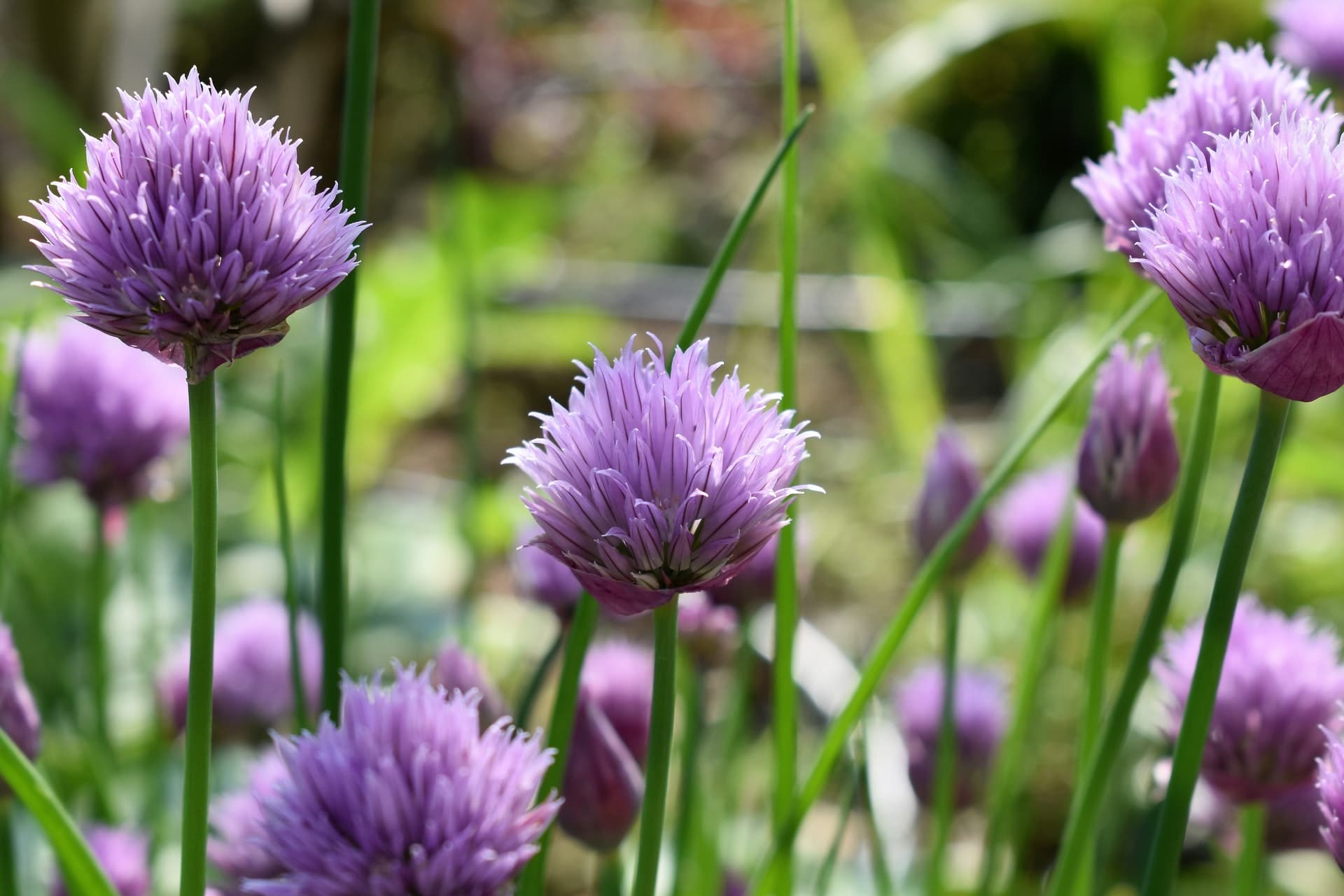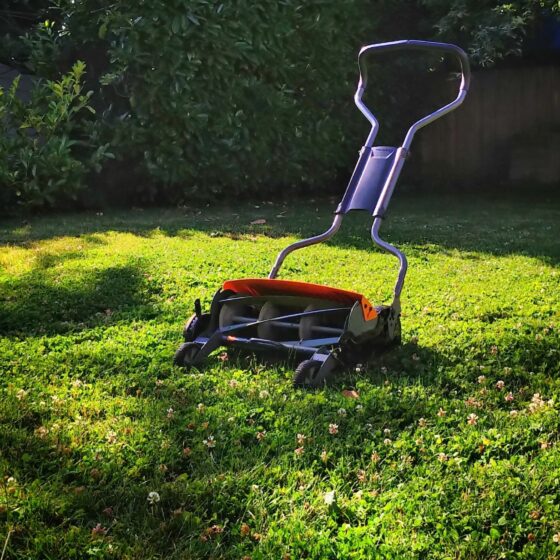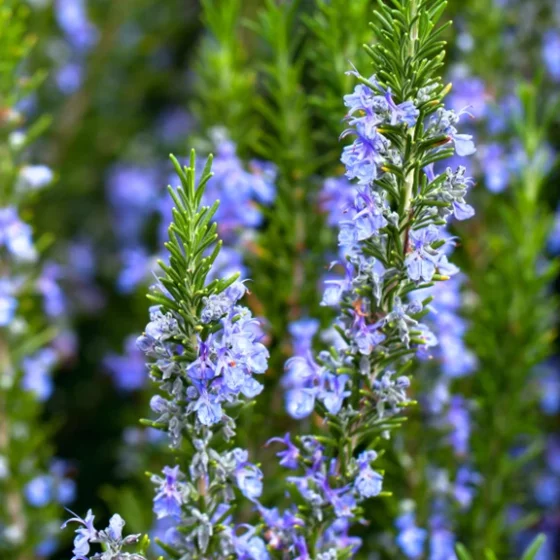If you’re looking for an easy herb to grow, chives are the way to go! In this blog post, we’ll teach you how to grow chives from seed or bulb, as well as how to provide the best growing conditions for this plant.
Chives are a great addition to any garden, and they can also be used in cooking. So what are you waiting for? Read on to learn more about growing this delicious herb!
About Chives
Chives are a member of the Allium family, which also includes onions, leeks, and garlic. They are native to Europe and Asia, and have been cultivated for centuries. They were even used in ancient Chinese medicine. Chives are now grown all over the world, and they’re a popular ingredient in many cuisines.
The good news is that growing chives is incredibly easy—even if you’ve never grown an herb before! Chives are very hardy, and they can be grown in a wide range of climates. They’re also relatively low-maintenance, so you won’t have to spend hours tending to them.
Types of Chives
There are many different varieties of chives, but the most commonly grown species are common chives (Allium schoenoprasum) and garlic or Chinese chives (Allium tuberosum). Both are members of the onion family and have that telltale onion flavor, but each has its own subtle nuances.
Common chives are the most widely cultivated type of chive. They have a mild onion flavor and are often used as a garnish or in salads. Garlic chives have a mild garlic flavor and are popular in Asian cuisine.
Growing Chives from Seed
Chives can be grown from seeds or bulbs. To grow chives from seed, start by planting the seeds in a pot or container filled with well-draining soil. Water the seeds regularly, and keep them in a sunny spot. Once the seedlings have emerged, thin them out so that they’re about 4 to 6 inches apart.
When growing chives from seed, the best time to sow them is in the spring. Also, you can start seeds indoors six to eight weeks before the last frost.
When the chives are big enough to handle, transplant them into your garden.
Growing Chives by Division
Division can be done in spring or fall. When dividing, make sure each clump has at least three to five bulbs. Alternatively, you can buy chive bulbs in a garden center.
Here’s how to plant chives in your own garden.
- Select a sunny spot in your garden for your chives. Chives need at least six hours of sunlight per day to grow well.
- Prepare the soil in your selected spot by loosening it with a shovel and adding some compost or manure.
- Plant your chives by taking a small handful of bulbs and planting them about an inch deep in the soil.
- Water your chives well after planting, and keep the soil moist throughout the growing season.
With just a little bit of effort, you can have fresh chives growing in your garden all season long!
How to Care for Chives
Chives are one of the easiest herbs to grow, and they make a great addition to any herb garden. With just a little care, you can enjoy fresh chives all season long.
Light Requirements
Chives are a member of the onion family and, like other members of that family, they require full sun to grow well. Chives will also do well in partial shade, but they may not produce as many flowers and seeds in shadier conditions.
Soil Requirements
Chives prefer a rich, well-draining soil, but will also do well in average garden soil. For the best harvest, you should plant chives in a sandy loam soil with a pH between 6.0 and 7.0, but they will also tolerate poorer soils and some clay.
Watering Chives
Chives like moist but well-drained soil, so make sure to water them regularly. However, don’t overdo it—chives are susceptible to root rot, so it’s important not to water them too much.
Chives are best watered using a soaker hose or drip irrigation system. Water at the base of the plant, taking care not to wet the leaves. Water chives early in the day so that the leaves have time to dry before nightfall.
You can apply a thin layer of mulch around the plants to help retain moisture.
If you are growing chives indoors, water them when the top inch of soil feels dry. Allow the water to drain away and do not let the chives sit in water. Be sure to provide chives with good drainage and airflow to prevent the development of fungal diseases.
It is important to water chives regularly during the growing season. Chives will go dormant in the winter, so you can reduce watering during this time. However, if the soil is very dry, you may need to water chives occasionally to prevent the roots from drying out completely.
Fertilizing Chives
Chives are not heavy feeders, but they will benefit from the addition of a balanced fertilizer before planting and again during the growing season.
Temperature and Humidity
Chives are fairly easy to grow, and will do best in an environment with plenty of sunlight and moderate temperatures. The ideal temperature for growing chives is between 60-70 degrees Fahrenheit, with a humidity level of around 40-50%.
Harvesting Chives
To harvest chives, simply snip off the leaves with a sharp knife or scissors, about 1 inch above the ground. Chives can be harvested as needed throughout the growing season. If you are growing chives for their flowers, make sure to leave some unopened flower buds so that the plant can continue to bloom.
Storing Chives
Chives can be used fresh or dried in a variety of dishes, such as soups, salads, pasta, and potatoes. When storing chives, be sure to keep them in a cool, dark place so that they remain fresh for longer.
Chives can be stored in the refrigerator for up to two weeks. They can also be frozen for longer periods of time. To freeze chives, chop them into small pieces and place them in a freezer-safe container.
To dry, cut the leaves and hang them upside down in a cool, dark place. Once dried, store in an airtight container.
Conclusion
Conclusion paragraph: So there you have it—everything you need to know about growing chives. It’s a simple process, and the results are well worth it. Not only do they taste great in food, but chives also add an attractive pop of color to any garden or landscape. Give them a try!
FAQ
How long does it take for chives to grow?
Chives are one of the quickest and easiest herbs to grow! They can be ready to harvest in as little as eight weeks from seed.
How much space does chives need to grow?
Chives are a small plant, so they don’t need a lot of space. They can be grown in containers or in the ground.
Do chives grow back after cutting?
Yes, chives will grow back after cutting. In fact, they are one of the few herbs that actually benefit from being cut back. Cutting chives encourages them to produce more leaves.
To encourage growth, cut chives back to about an inch above the ground. They will quickly grow back, and you can keep harvesting them all season long!
Should you allow chives to flower?
Chives will flower if left unchecked, but it’s best to cut the flowers off as soon as they appear. Chive flowers are pretty, but they can be quite strong-tasting. Plus, once chives start flowering, their leaf production will decrease.
Are chives an annual or perennial plant?
Chives are a perennial herb, which means they come back year after year. If you’d like to learn how to grow chives, cheack out our detailed guide above.













